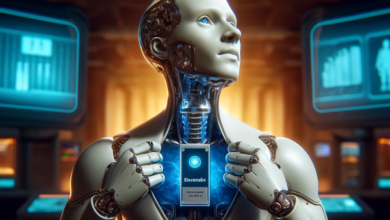Pegasystems expands generative AI to process design and user training

Low-code workflow automation provider Pegasystems Inc. today is using its PegaWorld iNspire conference in Las Vegas to roll out enhancements to its Pega GenAI Blueprint application design-as-a-service tool and introduce an overhauled approach to training that uses generative artificial intelligence to simulate individual tutoring.
Pega has already incorporated generative AI into several of its products. Its GenAI Coach guides employees through complex processes. GenAI Knowledge Buddy provides contextual answers to questions based on an enterprise knowledge base. GenAI Automate offloads routine tasks and GenAI Analyze summarizes and extracts insights from cases, data, meetings and conversations.
Pega GenAI Blueprint uses design thinking concepts to enable people to turn ideas into interactive “blueprints” that serve as a foundation for applications. Announced in February, the product has been adopted more quickly than any offering in the company’s history, with more than 30,000 blueprints created in nearly 500 organizations since becoming available in April.
AI-driven process design
The software uses generative artificial intelligence to allow users to create application designs by describing business concepts. It draws on best practices Pega has honed over more than 40 years to tailor workflows for most scenarios. “It’s a combination of our best practices and what we’ve seen from clients,” said Don Schuerman, the company’s chief technology officer. “It delivers a best-practice first draft that recommends what workflows need to be included, what they look like and what data is needed.”
Once a blueprint design is complete, it can be imported into Pega’s low-code App Studio and turned into a working application.
The announced enhancements enable organizations to import existing assets, content and knowledge. Support for business process modeling notion models is planned within a month, and legacy inputs like process documentation, application screens and full blueprint designs accessible via application programming interfaces will be added in the third quarter. BPMNs are a standard set of diagramming conventions for describing business processes.
Users will soon be able to preview a proposed user interface instantly across any channel and device. Pega said applications built in App Studio can be integrated with most enterprise applications via APIs.
A new user interface being previewed this week at the company’s PegaWorld iNspire conference is said to speed up and simplify the design process. The tool now automatically generates editable data model fields behind each case type, and users can invite others to collaborate and edit their blueprints.
Generative AI can create additional asset ideas such as case types, fields or personas with a single click. Pega partners can upload and save their proprietary workflow templates into the company’s best practices library.
In the final analysis, GenAI Blueprint is an assistant but not a replacement for a human designer, Schuerman said. “AI is best used to help a person design a process rather than to create the process itself,” he said.
The professor is a bot
The company is also overhauling its approach to trading with a generative AI-based tutor called Pega GenAI Socrates. It creates individualized and interactive lessons that automatically adapt to each student’s vertical industry, skill level and learning needs.
Citing research that has shown that 90% of information delivered through a traditional classroom lecture or e-learning platform is forgotten within a month, Pega said its new approach uses the Socratic teaching method approach, which stimulates critical thinking and ideas through dialogue and questioning.
“We’re moving toward giving each learner a personalized teaching experience,” said Kate Lepore, senior director of learning strategy and solutions.
The company said traditional courseware doesn’t lend itself well to the Socratic method with its rigid lesson plans and multiple-choice tests. Generative AI changes all that.
Pega GenAI Socrates simulates a tutoring experience by engaging students in a two-way text or simulated voice conversation in any one of 10 languages. The discussion is interspersed with open-ended questions on each learning objective. It personalizes lessons to address students’ weak spots while helping them better grasp and internalize their newfound knowledge.
Students are encouraged to use their knowledge to analyze real-life scenarios to improve retention. Generative AI enables the tutor to focus on knowledge gaps and skip concepts that students already know.
Pega GenAI Socrates is now available for system architecture training on Pega Academy, and additional courses will be added over the next few months.
Image: Pegasystems
Your vote of support is important to us and it helps us keep the content FREE.
One click below supports our mission to provide free, deep, and relevant content.
Join our community on YouTube
Join the community that includes more than 15,000 #CubeAlumni experts, including Amazon.com CEO Andy Jassy, Dell Technologies founder and CEO Michael Dell, Intel CEO Pat Gelsinger, and many more luminaries and experts.
THANK YOU



